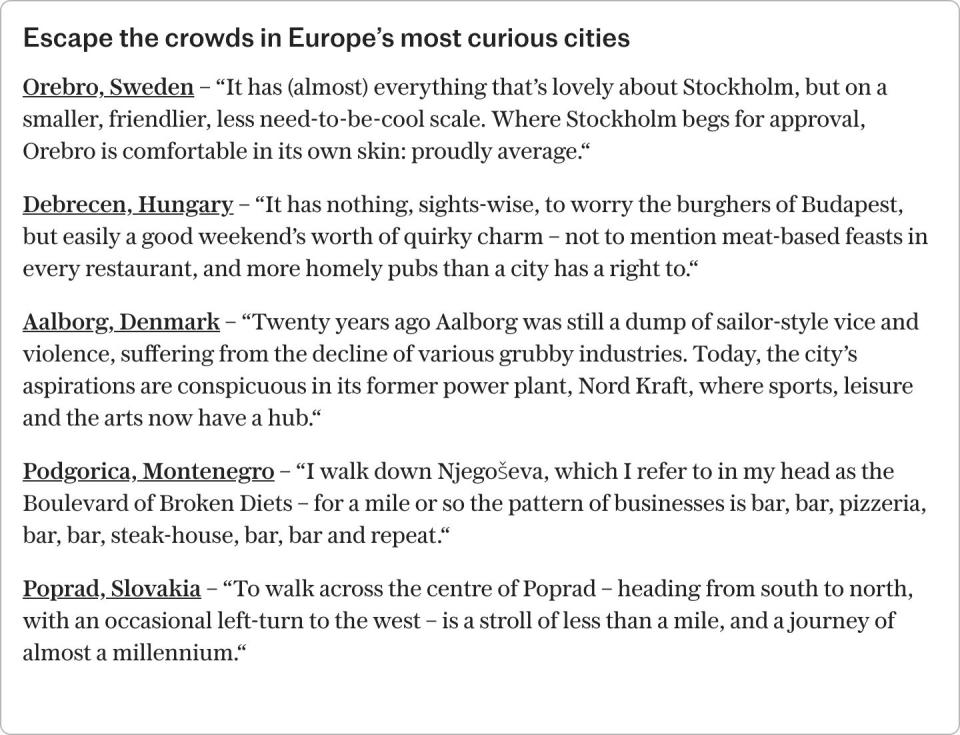You don’t have to spend more than an hour in the center of Skopje to notice that the capital of North Macedonia has a major monument problem. An addiction to monuments, if you like. After just a few minutes in the city, I’m not entirely sure whether I’m in a city or a historic theme park – where virtually every dignitary and important moment is enshrined in stone.
The obsession is present in the great Porta Macedonia; the “Macedonia Gate”, which gives a remarkable impression of the Arc de Triomphe in Paris, even though it was only inaugurated in 2012. It’s located a few steps away in the Woman-Warrior Park, the green space that, despite its very specific name, appears to be devoid of women (although there are several sculpted figures of male soldiers, writers, politicians and revolutionaries).
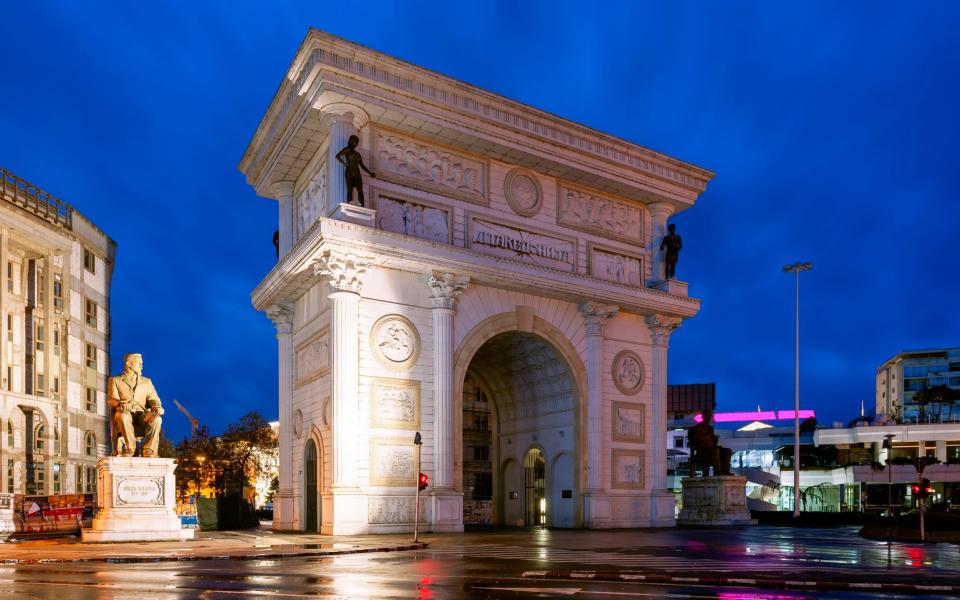
And it is there, most strikingly, in Macedonia Square, where ‘Warrior On A Horse’ towers 75 feet high as one of the world’s tallest and most controversial urban sculptures.
Controversial? The title of the artwork is deliberately kept vague, but almost anyone who cranes their neck up into the southern European sun (like myself), even if most passing locals walk by without a glance – knows that the bronzed military commander on the prancing stallion, high on its pedestal above the ornamental fountain, is said to be Alexander the Great.
It was installed here in 2011, as part of a wider attempt to claim intellectual property of the name ‘Macedonia’ and wrest it from neighboring Greece (which considers the name its own). But a peace of words broke out in 2018, when the “Republic of Macedonia” agreed, through the June Prespa Agreement, to rename itself “North Macedonia”, to distinguish itself from the Greek region “Central Macedonia”. Since then, Alexander’s identity has been officially removed from Skopje’s most prominent works of art. Just as the even larger (29 metres) ‘Warrior’ statue – directly opposite, on the other side of the Vardar River – stands definitely, definitely not Philip II, Alexander’s father. At least, not anymore.
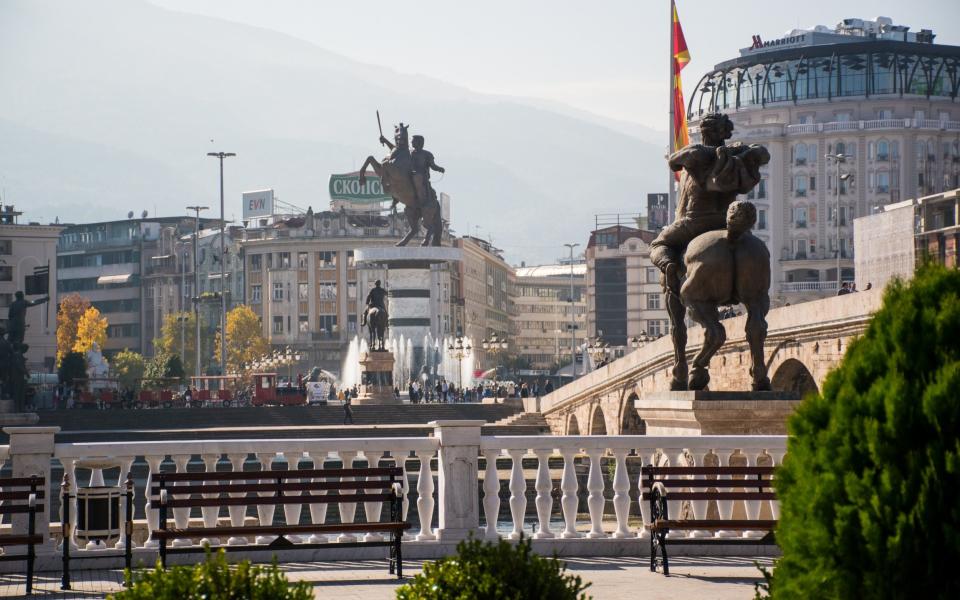

Some might say this is just common sense. After all, the fourth century BC’s most formidable warlord and his father were both born in what is now Greece – in Pella, an ancient city whose ruins lie 25 miles west of modern-day Thessaloniki. And Philip has a colossal tomb in Vergina – thirty kilometers further south. But then again, common sense has not always been a relevant factor in North Macedonia’s recent political story.
The images are linked to a key year in the city’s history: 2014. Or, to be precise, “Skopje 2014” – the construction orgy carried out on the orders of former Prime Minister Nikola Gruevski. The former prime minister, who was in power between 2006 and 2016, was an avowed nationalist who wanted to take over a distant past for a new country – a driving force behind this local culture war. Several other heavy masonry slabs were erected during this period, including the Porta Macedonia, and a pair of crossings over the Vardar – the Bridge of Art and the Bridge of Civilizations – whose graceful arches are complemented by another choir line of statues; consisting of philosophers, actors and playwrights.
Not all of these additions have aged well. Of the three gigantic galleons installed on the river in 2012 – for aesthetic reasons that remain opaque – only one is still in use as a restaurant (one abandoned, the other removed). Gruevski has also had his time. After being voted out of the top position, he was sentenced (in 2018) to two years in prison for corruption, but fled to Hungary and applied for asylum.
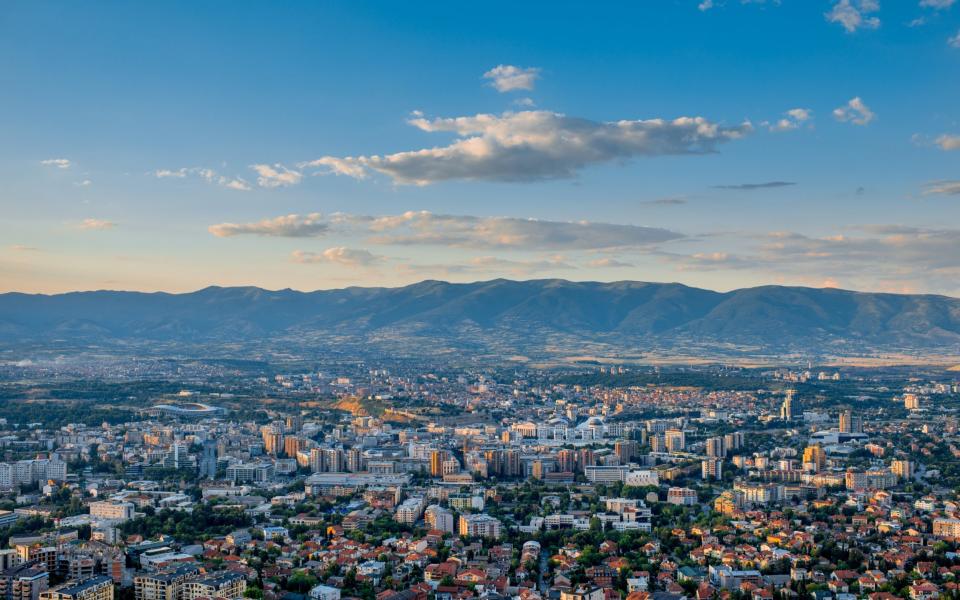

The Archaeological Museum of Macedonia, which dominates the riverbank, certainly looks impressive, even if its attempts to recreate a Greco-Roman temple fall short. The multi-column facade shines a little too brightly, making it an innovation from 2014 rather than a relic from centuries before Christ.
Gruevski’s expensive legacy divides opinion in Skopje, where many residents understandably decry the money spent on vanity projects when schools, hospitals and roads could have used the money. In fact, the statue of “Alexander” raised hackles from the start. “The aim, they say, is to make Skopje look like Paris,” said Danica Pavlovska of the Association of Architects when it was unveiled thirteen years ago. “But the scale of the project for a city of this size is completely out of whack, and frankly the pace is frightening.”
And yet, despite all the fuss, “Skopje 2014” has left a recognizable mark on one of the continent’s least recognized capitals. And maybe that was necessary. For all its history – and there is plenty of it, and none of it needs to be ‘borrowed’ or appropriated – Skopje has only been a national capital since 1991, when the then Macedonia declared its independence from the disintegrating Yugoslavia. Even in this age of cheap mini holidays and cheap airlines, it is not a well-known dot on the map. There is only one single flight from a British airport: the inevitable service from Luton, offered by Eastern European specialist Wizz Air.
Of course, ‘anonymous’ does not have to mean ‘anodyne’. Skopje may be small, but it is full of life in its busiest neighborhoods. And his story is fascinating. On July 26, 1963, a magnitude 6.1 earthquake ripped through the city, destroying 80 percent of the city. Much of what you can see now dates from the 61 years that followed this catastrophe. It is true that this means a certain flatness of architecture, born of the socialist decades in Iron Curtain-bordering Yugoslavia. But when you read about the scale of the disaster, you can forgive the ordinariness.
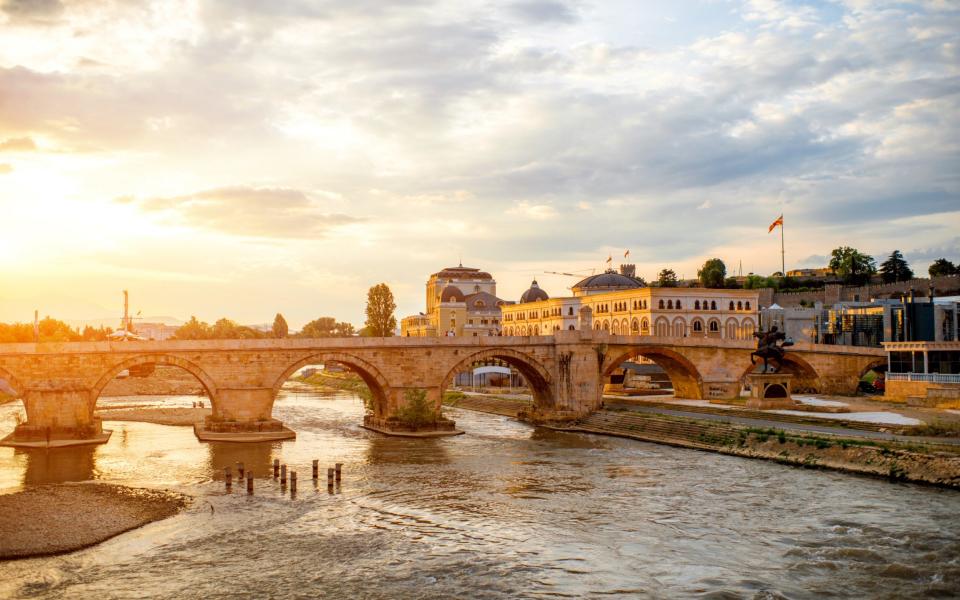

Besides, even this has its charms. Up the hill, on the north bank of the Vardar, the Museum of Contemporary Art bears all the hallmarks of Eastern Bloc splendor. As was always likely, its foundations were laid in the immediate aftermath of the earthquake. But here in 2024, the cavernous halls and sturdy concrete act as a broad canvas for a range of art and artists – from pieces by Picasso and Alexander Calder to thought-provoking installations by 21st century celebrities. The view through the enormous windows, meanwhile, grabs your attention and holds your gaze, showing a city that – pinging on very few tourist radars – is all the more intriguing for its lack of profile.
Look at that
The Archaeological Museum is great in grandeur, but has little real substance. It offers a few trinkets from Skopje’s Roman incarnation, Scupi, and a wealth of authentic wonders that shed light on ancient Thrace (while hardly mentioning that Thrace was largely what it was). present-day Bulgaria). There is much more depth in the Museum of the Macedonian Struggle, which explores the country’s rise, first from the Ottoman Empire, then from the trials of the World and the Cold Wars. But unless you’re desperate to delve into the party politics of the late 19th century, you’re better off heading to the Museum of Contemporary Art (see above) – not least because a walk there takes you along the Kale. This mighty fortress is Byzantine in origin from the sixth century, but was fortified and expanded by the Ottomans after they took control in 1392. It still guards the Vardar from a crag on the north bank – and is one of the few obvious structures to survive the earthquake. .
Another, partially, is the former central station. It was built between 1938 and 1940 as a classic railway terminus – made entirely of pale marble and with a central dome – and was badly damaged in 1963. But the right wing was salvaged and has an afterlife as the Museum of the City.
If you have the time, it is also worth driving 16 kilometers southwest of Skopje, to the Matka Canyon – a geological masterpiece of remarkable but less praised beauty, where the Treska River (a tributary of the Vardar) flows . the limestone of Mount Suva Gora.
Coolest corner
For all the unsubtle references to Alexander the Great, it is a different era – and a different ruling elite – that sings best in the center of Skopje. The city’s Ottoman era lasted more than five centuries (1392-1912) and is alive and well in the Old Bazaar, the vast labyrinth of lanes and alleys that stretch along the north side of the Vardar. The district is at its most beautiful in the minaret of the Mustafa Pasha Mosque (an echo of 1492 and perhaps the city’s best earthquake survivor), but takes its atmosphere not from the call to prayer, but from the constant rumbling of conversations in the city. the many cafes and restaurants. The Bazaar isn’t necessarily a place for late-night merriment (although you can have cocktails at Eight Kitchen & Bar, but all the life is here once the sun sets – from families dining to the bubble of hookah pipes.
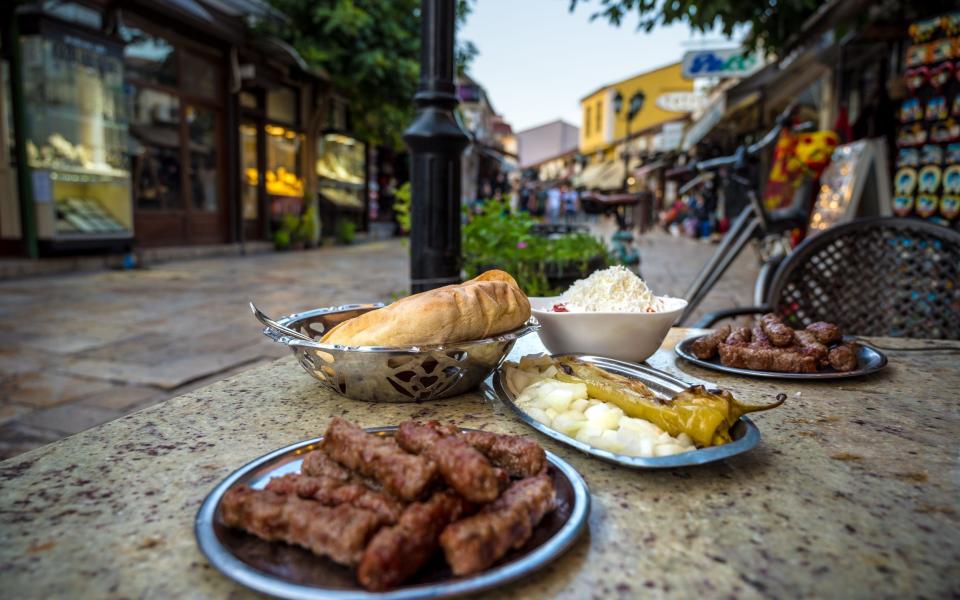

Signature dish
As in many parts of the Balkans burek is a popular meal-cum-snack; a filling, if not necessarily luxurious, package of filo pastry, filled with different types of meat, cheese, potatoes, spinach and sometimes all of them. Many restaurants in the Old Bazaar offer versions of it, as well as juicy grilled meats (pork and chicken) with flatbreads. Pcela (the name translates as “Bee”) is one of the best.
Largest export
The spirit of the Ottoman Empire hangs around the Bazaar (and every city bar) in the form of rakija, the fiery fruit brandy of the southern Mediterranean. North Macedonia considers it its national drink and prefers to flavor it with plums or apricots.
British equivalent
In a minute, Cardiff. An important city that grew around a castle on a hill; a regional capital with ambitions to go national (actually achieved, in the case of Skopje).
Fun fact
Skopje has red double-decker buses, in tribute to (or perhaps shameless imitation of) London – another of Gruevski’s strange ideas to put the city on the map.
How to do that
Wizz Air (0330 9770444) flies to Skopje from London Luton, from £29 each way. Double rooms at the four-star Alexander Square Boutique Hotel (00389 2 311 1141) cost from £57 per night. Balkan specialist Regent Holidays (0117 453 5461) offers a five-day “Skopje Short Break”, including Matka Canyon, and a day trip to the North Macedonian city of Ohrid (as well as the capital). From £935 per person (including flights).
